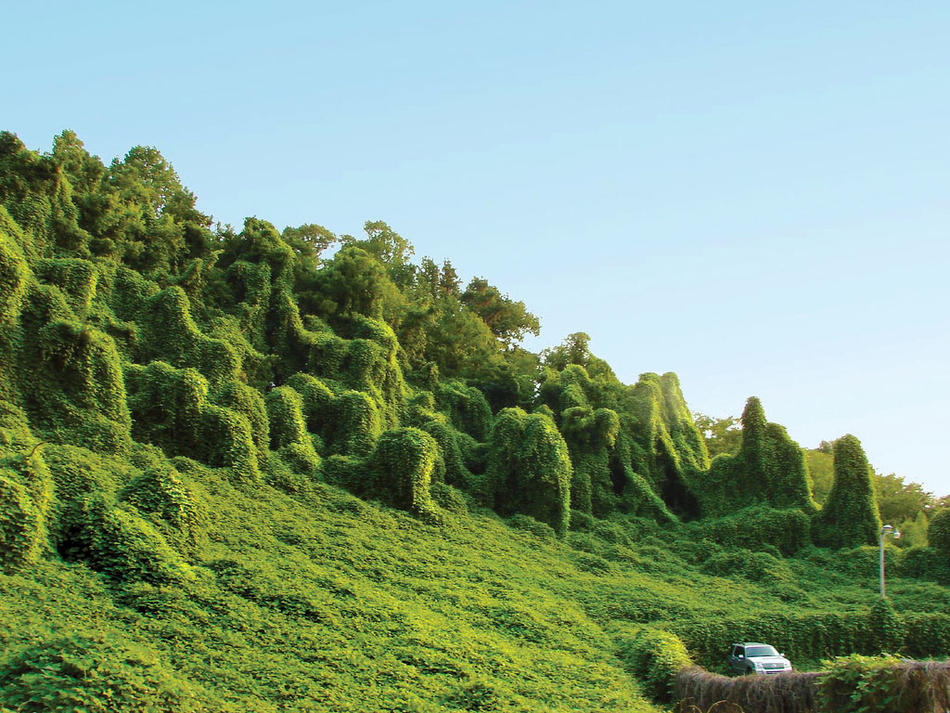The Asian vine kudzu was introduced to the southeastern U.S. to help control soil erosion in the 1930s and 1940s. The effort was led by federal agricultural offi cials and soon was recognized as a disaster: Because kudzu had no insect or animal predators in the region, it spread like wildfire, forming leafy canopies over entire forests and killing all plant life beneath.
Now, Earth Institute postdoctoral fellow Jonathan Hickman has shown that kudzu, which has smothered seven million acres of U.S. forest to date, is also causing air pollution. It does so by sucking nitrogen out of the air and transferring it into the soil. Usually, this is a good thing: Most plants get their nitrogen from the ground and thus depend on “nitrogen-fixing” species like kudzu for their supply. But kudzu is pumping so much nitrogen into the soil in some areas, Hickman found, that chemical reactions are taking place that spew back ozone — a gas that’s beneficial in the upper regions of the atmosphere, but when present in the lower regions contributes to smog and causes respiratory problems in humans.
“Air pollution is a risk that hasn’t been considered much in discussions about invasive species,” says Hickman, whose findings appeared May 17 in the Proceedings of the National Academy of Sciences. “It’s something we may have to pay more attention to.”



